Field Trip to Pikesville
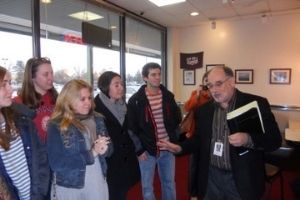
![]() A blog post by Program Manager Rachel Cylus.
A blog post by Program Manager Rachel Cylus.
Like all school students, as a child I looked forward to field trips – a break from the usual routine, and an opportunity to see something, new, different, exotic. Growing up in Baltimore’s Jewish suburbs in the 1990s, Pikesville was just about the last place on my mind that would have qualified as a field trip.
But yesterday, as part of the third class of “Staging the Suburbs” at JHU, that is exactly what we did.
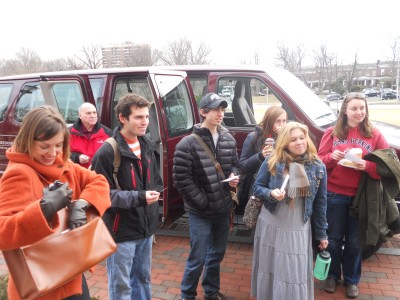 As eight students, Hopkins Professor Jennifer Kingsley, Museum director Avi Decter, class instructor Laura Tomes and I arrived at Hopkins’ Mason Hall, we found instructor Dean Krimmel already in conversation with our van driver, Joel. Joel, as it turned out, was a local Jewish guy who had grown up in precisely the neighborhoods we planned on visiting – how perfect!
As eight students, Hopkins Professor Jennifer Kingsley, Museum director Avi Decter, class instructor Laura Tomes and I arrived at Hopkins’ Mason Hall, we found instructor Dean Krimmel already in conversation with our van driver, Joel. Joel, as it turned out, was a local Jewish guy who had grown up in precisely the neighborhoods we planned on visiting – how perfect!
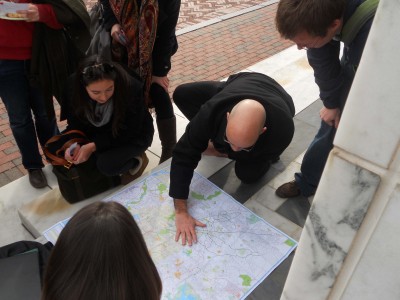 Dean, as it turned out, envisioned more than just a trip along the Jewish northwest trajectory out of the city, he had arranged for a bit of time travel. Each student and Professor Kingsley was assigned the identity of an actual Jewish Baltimorean who decided to move to the suburbs in the 1950s. Each was given an index card with their new name and a short biography detailing their current living situation, profession, family status, and reasons for moving. Laura, Dean and Avi played housing developers prepared to “sell the suburbs”, and I was given the role of housing realtor, Helen Goldberg (yup, my grandma!! See February 6th blog posting).
Dean, as it turned out, envisioned more than just a trip along the Jewish northwest trajectory out of the city, he had arranged for a bit of time travel. Each student and Professor Kingsley was assigned the identity of an actual Jewish Baltimorean who decided to move to the suburbs in the 1950s. Each was given an index card with their new name and a short biography detailing their current living situation, profession, family status, and reasons for moving. Laura, Dean and Avi played housing developers prepared to “sell the suburbs”, and I was given the role of housing realtor, Helen Goldberg (yup, my grandma!! See February 6th blog posting).
From the moment we began, it was clear that the students had really taken their 1950s identities seriously, pairing up with their “spouses”, and discussing their housing priorities. Ryan (Freshman) portrayed a 45 year old wife and mother, and dedicated himself to finding a neighborhood with good schools for his middle school age children. Amanda (Sophomore) and Evan (Junior) took on their role as “newlyweds” earnestly, worrying about whether their meager incomes would ever allow them to move their young and growing family out of their parents’ home.
Our adventure to the suburbs began as we headed towards Druid Hill Park. Driving along lower Park Heights Avenue, students were challenged to see the neighborhood as they would have in the 1950s, when the World War I era homes and synagogues were part of a predominantly Jewish neighborhood. Today this part of Baltimore City is mostly an African American neighborhood, and although many of the synagogues retain architectural elements related to their past use (star of David windows, engraved ten commandments), they are now churches.
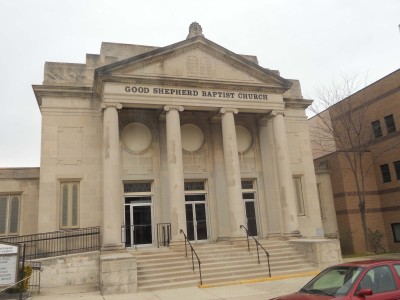 When we reached the 3700 block of Park Heights, we passed one of the childhood homes of my grandmother at 3701. Now a Baptist Church, my grandmother lived in this house until it was sold to the Trenton Democratic Club, an important political organization in Baltimore for many years. She remembers it as a wonderful house to throw parties in.
When we reached the 3700 block of Park Heights, we passed one of the childhood homes of my grandmother at 3701. Now a Baptist Church, my grandmother lived in this house until it was sold to the Trenton Democratic Club, an important political organization in Baltimore for many years. She remembers it as a wonderful house to throw parties in.
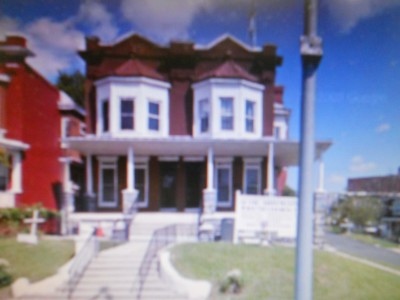 The first suburban neighborhoods that we visited were near Cross Country Elementary school. The wooded hills were speckled with red brick bungalows, split levels and cottages.
The first suburban neighborhoods that we visited were near Cross Country Elementary school. The wooded hills were speckled with red brick bungalows, split levels and cottages.
 These modest homes on little plots were a stark comparison to the row homes and front porch culture of the city. As we continued further along Park Heights Avenue the synagogues grew larger and the separation between residential and commercial districting became more apparent. From Sugarville to Ranchleigh to Smith Avenue, the housing diversity of the suburbs was clear.
These modest homes on little plots were a stark comparison to the row homes and front porch culture of the city. As we continued further along Park Heights Avenue the synagogues grew larger and the separation between residential and commercial districting became more apparent. From Sugarville to Ranchleigh to Smith Avenue, the housing diversity of the suburbs was clear.
I was amazed by how different these oh-so familiar streets and places seemed to me. A field trip to Pikesville suddenly seemed far more interesting that I expected. The houses and synagogues and schools became more dynamic as Dean explained how and when they were developed and I allowed myself to imagine moving to Pikesville before the ease of the Expressway, the Beltway and even Northern Parkway, when the suburbs may have seemed more like the boonies.
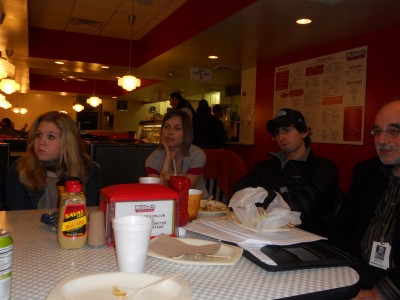 The field trip ended with a stop at Miller’s Delicatessen for a snack and discussion (potato knish and Dr. Brown’s Cel-Ray soda).
The field trip ended with a stop at Miller’s Delicatessen for a snack and discussion (potato knish and Dr. Brown’s Cel-Ray soda).
Was the move to the suburbs the the beginning of the breakdown of the Jewish community? Or just an opportunity to reimagine it?
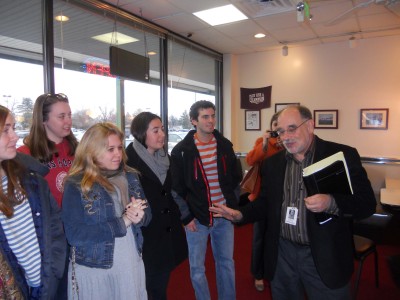 As the grandchild of the generation who moved to the suburbs, it is hard for me to imagine Jewish Baltimore without Pikesville, or for that matter, Pikesville without Baltimore Jews.
As the grandchild of the generation who moved to the suburbs, it is hard for me to imagine Jewish Baltimore without Pikesville, or for that matter, Pikesville without Baltimore Jews.
